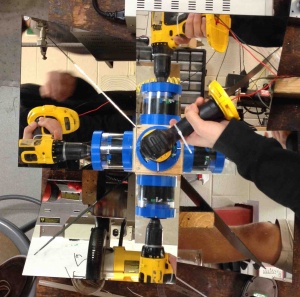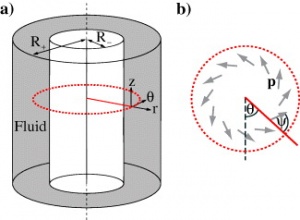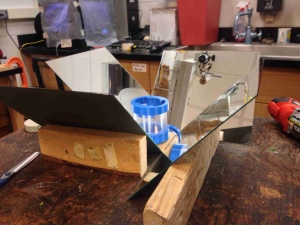Group 1 2014

Sedimentation of Chiral Particles in a Shear Flow
Group members: Johannes Jansson, Brian McMahon, Christian Reitz and Will Savoie
This is the website for the Chiral group. As a project for our Nonlinear Dynamics and Chaos class at Georgia Tech, we are investigating a new method for separating chiral particles. As the project progresses, this wiki page will be updated with more material. At the moment you can view our presentation material, whitepaper, data and pictures of our setup at this website.
Abstract
This experiment will attempt to separate chiral particles via shear flow. We will place 3-D printed chiral particles in a high viscosity fluid and use a Taylor-Couette apparatus to generate a shear flow. The results of this experiment should help to verify research by M. Makino and M. Doi. Additionally, our observations should give us a degree of insight into naturally occurring chiral behavior.
Motivation
Methods
To reach our goals for this experiment we need a highly viscous fluid in shear flow and particles with different chirality.

The centerpiece of the experiment was a Taylor-Couette device (figure 1). This device creates a reliable shear flow that should be optimal to see the separation effect. The effect we are demonstrating has only been experimentally examined using rotating parallel plates before, this should be the first time the effect is demonstrated in Taylor-Couette flow. Since the separation effect depends on a high Peclet number, we will be using a highly viscous fluid. Our fluid of choice will be transparent corn syrup. Finally, for chiral particles we went with a ribbon shape.
Throughout this experiment we have chosen to use simple, easily accessible equipment. The Taylor-Couette device was rotated using a cordless drill, the video recording made using a smartphone. All other equipment was either 3-D printed or available at Publix or Home Depot.
